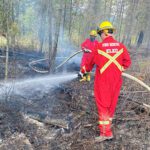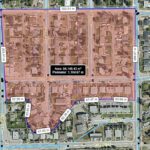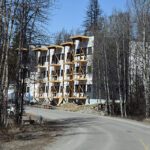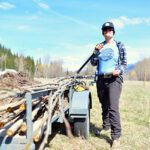Home »

Completion of important KNP project celebrated
Mr. David Wilks, Member of Parliament for Kootenay–Columbia, on behalf of the Honourable Leona Aglukkaq, Canada’s Environment Minister and Minister Responsible for Parks Canada, last week announced the completion of construction of three wildlife underpasses and 4.6 kilometres of fenced highway in an area with the highest number of wildlife collisions on Highway 93 South in Kootenay National Park.
“Our government is very pleased to support this important project that will improve highway safety for motorists and the health and well-being of wildlife in Kootenay National Park,” said Wilks. “Wildlife exclusion fencing has a proven track record of helping to keep large animals away from roadsides while directing them to crossing structures like underpasses, connecting landscapes and wildlife.”
Built near the Dolly Varden Day Use Area, wildlife-vehicle collisions in this area have included large numbers of deer, as well as elk, moose, wolves and foxes. A combination of fencing and underpasses has the potential to make a tangible reduction in the number of wildlife collisions, all while improving safety for motorists, residents and visitors.
This $4.9 million project was announced in 2009 as part of an ‘Action on the Ground’ initiative – funding set aside by the Government of Canada to address pressing ecological concerns in national parks across Canada. Originally, the project included the construction of only one to two wildlife underpasses and three kilometres of fencing. Thanks to increased budget flexibility realized during tendering, further highway-wildlife improvements were achieved.
“Effective project management has allowed us to deliver more wildlife underpasses and fencing than originally planned for the same cost to taxpayers,” said Minister Aglukkaq. “This important infrastructure improvement contributes to economic growth and strengthens tourism in local communities, all while helping to preserve and improve this wonderful place.”
This announcement builds on 18 years of wildlife crossing research in Canada’s mountain national parks and further positions Parks Canada as a world leader in reducing wildlife-vehicle collisions. In neighbouring Banff National Park, a combination of wildlife crossing structures and animal exclusion fencing along the Trans-Canada Highway has reduced wildlife-vehicle collisions by over 80% (96% for elk and deer).
This project was inspired by the internationally recognized wildlife crossing structures and wildlife exclusion fencing constructed in Banff National Park, building on nearly 20 years of pioneering highway mitigations carried out by Parks Canada and partners. First installed in Banff National Park in 1996, a combination of fencing and crossing structures have helped reduce wildlife-vehicle collisions by 80% (96% for elk and deer).
With construction of Kootenay National Park’s three new wildlife underpasses and 4.6 kilometres of wildlife fencing now complete, Parks Canada’s staff will monitor use of the structures by wildlife as has been done along the Trans-Canada Highway in Banff National Park.
In addition to monitoring animals commonly known to use highway crossing structures such as bears, wolves, elk and deer, researchers will examine use of the crossings by less conspicuous animals such as wolverines, lynx and small mammals.
Knowledge and insights gained will inform future wildlife management and highway safety decisions and will be shared with partners, agencies and organizations around the world.
Parks Canada will provide regular project updates for the broader public through education programs, media updates and presentations at public and academic venues.
Video: http://www.youtube.com/watch?v=DD-uCLQGjfo
For additional information and updates on this project, please visit www.parkscanada.gc.ca/kootenay.
Parks Canada







